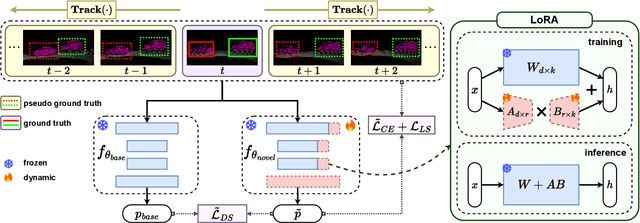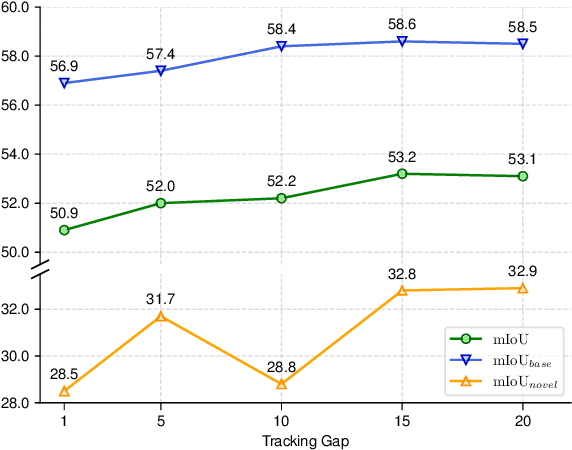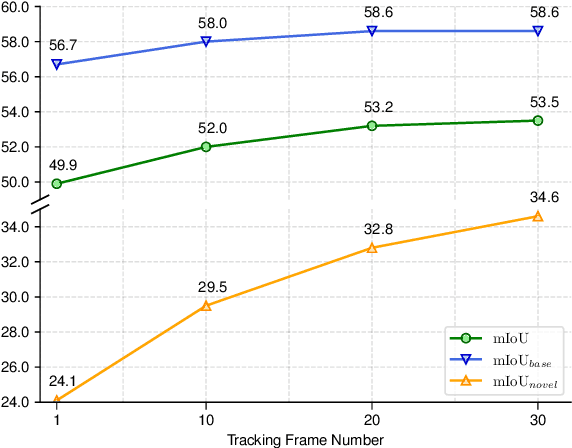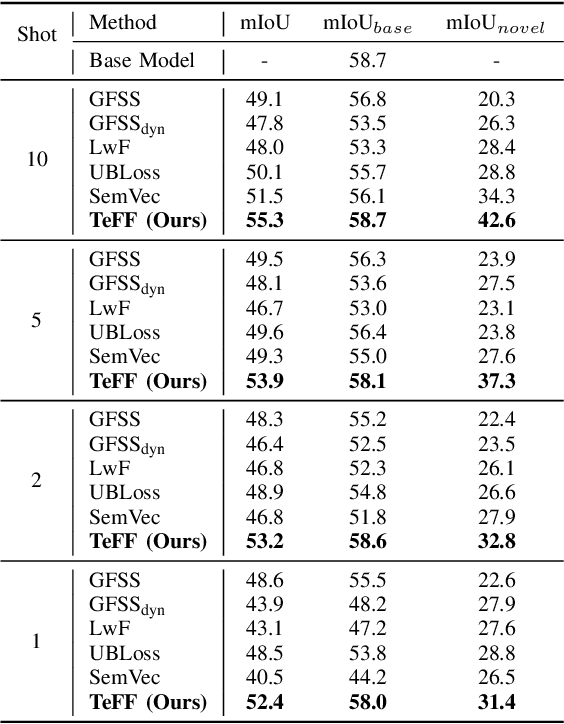Junbao Zhou
DragNeXt: Rethinking Drag-Based Image Editing
Jun 09, 2025Abstract:Drag-Based Image Editing (DBIE), which allows users to manipulate images by directly dragging objects within them, has recently attracted much attention from the community. However, it faces two key challenges: (\emph{\textcolor{magenta}{i}}) point-based drag is often highly ambiguous and difficult to align with users' intentions; (\emph{\textcolor{magenta}{ii}}) current DBIE methods primarily rely on alternating between motion supervision and point tracking, which is not only cumbersome but also fails to produce high-quality results. These limitations motivate us to explore DBIE from a new perspective -- redefining it as deformation, rotation, and translation of user-specified handle regions. Thereby, by requiring users to explicitly specify both drag areas and types, we can effectively address the ambiguity issue. Furthermore, we propose a simple-yet-effective editing framework, dubbed \textcolor{SkyBlue}{\textbf{DragNeXt}}. It unifies DBIE as a Latent Region Optimization (LRO) problem and solves it through Progressive Backward Self-Intervention (PBSI), simplifying the overall procedure of DBIE while further enhancing quality by fully leveraging region-level structure information and progressive guidance from intermediate drag states. We validate \textcolor{SkyBlue}{\textbf{DragNeXt}} on our NextBench, and extensive experiments demonstrate that our proposed method can significantly outperform existing approaches. Code will be released on github.
On Path to Multimodal Generalist: General-Level and General-Bench
May 07, 2025Abstract:The Multimodal Large Language Model (MLLM) is currently experiencing rapid growth, driven by the advanced capabilities of LLMs. Unlike earlier specialists, existing MLLMs are evolving towards a Multimodal Generalist paradigm. Initially limited to understanding multiple modalities, these models have advanced to not only comprehend but also generate across modalities. Their capabilities have expanded from coarse-grained to fine-grained multimodal understanding and from supporting limited modalities to arbitrary ones. While many benchmarks exist to assess MLLMs, a critical question arises: Can we simply assume that higher performance across tasks indicates a stronger MLLM capability, bringing us closer to human-level AI? We argue that the answer is not as straightforward as it seems. This project introduces General-Level, an evaluation framework that defines 5-scale levels of MLLM performance and generality, offering a methodology to compare MLLMs and gauge the progress of existing systems towards more robust multimodal generalists and, ultimately, towards AGI. At the core of the framework is the concept of Synergy, which measures whether models maintain consistent capabilities across comprehension and generation, and across multiple modalities. To support this evaluation, we present General-Bench, which encompasses a broader spectrum of skills, modalities, formats, and capabilities, including over 700 tasks and 325,800 instances. The evaluation results that involve over 100 existing state-of-the-art MLLMs uncover the capability rankings of generalists, highlighting the challenges in reaching genuine AI. We expect this project to pave the way for future research on next-generation multimodal foundation models, providing a robust infrastructure to accelerate the realization of AGI. Project page: https://generalist.top/
CARE Transformer: Mobile-Friendly Linear Visual Transformer via Decoupled Dual Interaction
Nov 25, 2024



Abstract:Recently, large efforts have been made to design efficient linear-complexity visual Transformers. However, current linear attention models are generally unsuitable to be deployed in resource-constrained mobile devices, due to suffering from either few efficiency gains or significant accuracy drops. In this paper, we propose a new de\textbf{C}oupled du\textbf{A}l-interactive linea\textbf{R} att\textbf{E}ntion (CARE) mechanism, revealing that features' decoupling and interaction can fully unleash the power of linear attention. We first propose an asymmetrical feature decoupling strategy that asymmetrically decouples the learning process for local inductive bias and long-range dependencies, thereby preserving sufficient local and global information while effectively enhancing the efficiency of models. Then, a dynamic memory unit is employed to maintain critical information along the network pipeline. Moreover, we design a dual interaction module to effectively facilitate interaction between local inductive bias and long-range information as well as among features at different layers. By adopting a decoupled learning way and fully exploiting complementarity across features, our method can achieve both high efficiency and accuracy. Extensive experiments on ImageNet-1K, COCO, and ADE20K datasets demonstrate the effectiveness of our approach, e.g., achieving $78.4/82.1\%$ top-1 accuracy on ImagegNet-1K at the cost of only $0.7/1.9$ GMACs. Codes will be released on \href{..}{github}.
TeFF: Tracking-enhanced Forgetting-free Few-shot 3D LiDAR Semantic Segmentation
Aug 28, 2024



Abstract:In autonomous driving, 3D LiDAR plays a crucial role in understanding the vehicle's surroundings. However, the newly emerged, unannotated objects presents few-shot learning problem for semantic segmentation. This paper addresses the limitations of current few-shot semantic segmentation by exploiting the temporal continuity of LiDAR data. Employing a tracking model to generate pseudo-ground-truths from a sequence of LiDAR frames, our method significantly augments the dataset, enhancing the model's ability to learn on novel classes. However, this approach introduces a data imbalance biased to novel data that presents a new challenge of catastrophic forgetting. To mitigate this, we incorporate LoRA, a technique that reduces the number of trainable parameters, thereby preserving the model's performance on base classes while improving its adaptability to novel classes. This work represents a significant step forward in few-shot 3D LiDAR semantic segmentation for autonomous driving. Our code is available at https://github.com/junbao-zhou/Track-no-forgetting.
RMem: Restricted Memory Banks Improve Video Object Segmentation
Jun 12, 2024



Abstract:With recent video object segmentation (VOS) benchmarks evolving to challenging scenarios, we revisit a simple but overlooked strategy: restricting the size of memory banks. This diverges from the prevalent practice of expanding memory banks to accommodate extensive historical information. Our specially designed "memory deciphering" study offers a pivotal insight underpinning such a strategy: expanding memory banks, while seemingly beneficial, actually increases the difficulty for VOS modules to decode relevant features due to the confusion from redundant information. By restricting memory banks to a limited number of essential frames, we achieve a notable improvement in VOS accuracy. This process balances the importance and freshness of frames to maintain an informative memory bank within a bounded capacity. Additionally, restricted memory banks reduce the training-inference discrepancy in memory lengths compared with continuous expansion. This fosters new opportunities in temporal reasoning and enables us to introduce the previously overlooked "temporal positional embedding." Finally, our insights are embodied in "RMem" ("R" for restricted), a simple yet effective VOS modification that excels at challenging VOS scenarios and establishes new state of the art for object state changes (on the VOST dataset) and long videos (on the Long Videos dataset). Our code and demo are available at https://restricted-memory.github.io/.
Few-shot 3D LiDAR Semantic Segmentation for Autonomous Driving
Feb 17, 2023



Abstract:In autonomous driving, the novel objects and lack of annotations challenge the traditional 3D LiDAR semantic segmentation based on deep learning. Few-shot learning is a feasible way to solve these issues. However, currently few-shot semantic segmentation methods focus on camera data, and most of them only predict the novel classes without considering the base classes. This setting cannot be directly applied to autonomous driving due to safety concerns. Thus, we propose a few-shot 3D LiDAR semantic segmentation method that predicts both novel classes and base classes simultaneously. Our method tries to solve the background ambiguity problem in generalized few-shot semantic segmentation. We first review the original cross-entropy and knowledge distillation losses, then propose a new loss function that incorporates the background information to achieve 3D LiDAR few-shot semantic segmentation. Extensive experiments on SemanticKITTI demonstrate the effectiveness of our method.
 Add to Chrome
Add to Chrome Add to Firefox
Add to Firefox Add to Edge
Add to Edge